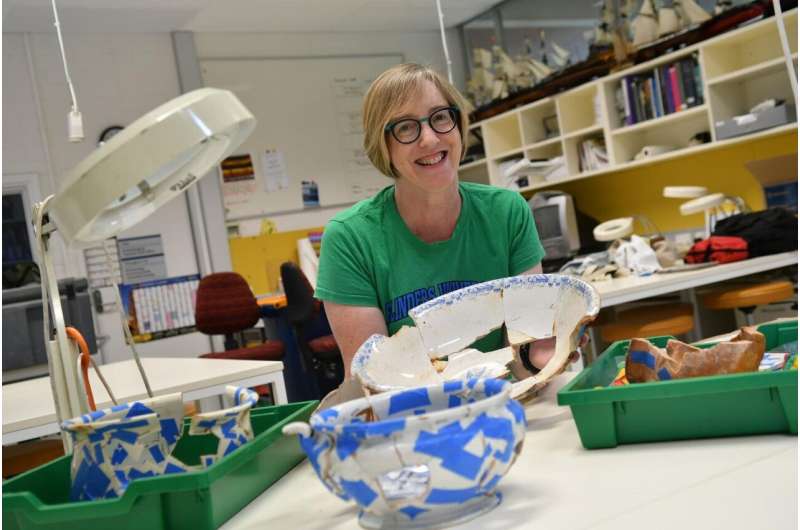Old Irish 'clachan' found in South Australia

The oldest known Australian example of a communal type of Irish settlement has been 'unearthed' in a dusty paddock in rural South Australia.
An extensive geophysical study of the Baker's Flat Irish settlement site near Kapunda has found the first—and possibly largest—clachan in Australia, says Flinders archaeologist Susan Arthure whose Ph.D. investigations of Irish history and archaeology in SA led her to the site in what appears to be a featureless paddock near the former mining and farming community.
"Clachans had actually died out in Ireland by the end of the nineteenth century but our research proves they continued in Australia, with this example the first to be fully described," says Irish-Australian archaeologist Ms Arthure.
"We found a large, vibrant clachan settlement, now hidden beneath the surface of an empty farm paddock, which contains a wealth of materials to tell us a lot about the past," she says.
"This traditional Irish settlement style, characterised by clusters of houses and outbuildings, highlights the way the new residents to this dry country worked together to make the best use of marginal land.
"More than 500 Irish migrants created a community here.
"Although outsiders looked at the settlement and judged it as chaotic and haphazard, in fact these Irish settlers were able to maintain a sustainable way of life by managing their animals communally and making joint decisions about how best to use the land.
"Being able to control a large area of land allowed Irish traditions and customs to be maintained."
Ms Arthure, who co-edited Irish South Australia: new histories and insights (Wakefield Press) says archaeology is not just about the ancient past.
"The recent past is really fascinating, and many people in South Australia would be descendants of those early settlers of Baker's Flat and other Irish settlements in the Clare Valley and the Mid North."
Flinders adjunct Associate Professor Lynley Wallis, a co-author of the latest Baker's Flat paper published in Archaeological and Anthropological Sciences, says: "What we found with GPR and magnetometry surveys shows us that sometimes all is not what it seems."
"When we arrived at the paddock, we had no idea about the paths, houses, yards, paddocks and fences hidden beneath the ground," Associate Professor Wallis says.
University of Queensland geophysical archaeologist Dr. Kelsey Lowe, another author on the paper, says that this is one of the largest surveys of its kind to be undertaken in Australia.
"When we began to download the data and saw structures and enclosures appearing, it was a very exciting moment," Dr. Lowe says.
"We were also fortunate to have Dr. Josh Feinberg, at the USA University of Minnesota, to assist us in analysing some of our samples."
More information: Kelsey M. Lowe et al, Geophysical and archaeological investigations of Baker's Flat, a nineteenth century historic Irish site in South Australia, Archaeological and Anthropological Sciences (2020). DOI: 10.1007/s12520-019-01003-2
Provided by Flinders University





















